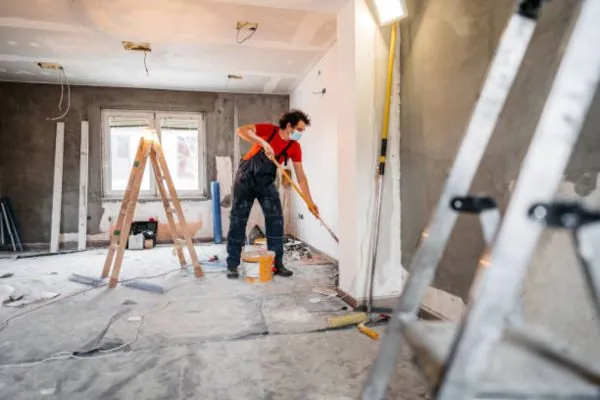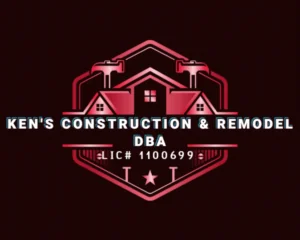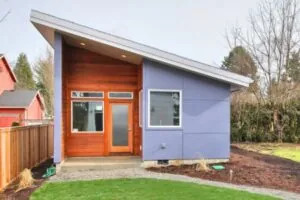When planning a whole-house renovation, it is easy to get caught up in the excitement and overlook critical details. You might underestimate costs, skip necessary permits, or even hire the wrong contractor—all mistakes that can lead to significant setbacks. Understanding these common pitfalls is crucial for a successful project. Let’s explore how to navigate these challenges effectively and guarantee your renovation goes as smoothly as possible, starting with the risks of a poorly planned renovation.
The Risks of a Poorly Planned Renovation
When you commence a whole-house renovation, the risks of a poorly planned project can quickly snowball into a homeowner’s nightmare. You might envision a beautiful space, but without a solid plan, chaos can ensue. You could face unexpected delays, resulting in costly overtime for contractors and wasted time on your end.

Lack of clear communication with your team can lead to misunderstandings about design choices and timelines, amplifying frustration. If you do not account for structural issues, like hidden plumbing or electrical problems, you may find yourself shelling out more cash than you anticipated. Planning and considering all aspects of full house renovation cost is critical to being successful.
Taking on too many tasks at once can overwhelm you and your crew, leading to mistakes that compromise quality. You could also run into zoning laws or permit issues you did not anticipate, stalling your project and adding more headaches. Also, not having a defined vision can cause you to make impulsive decisions, ultimately derailing your original goals.
By recognizing these risks early on, you can take proactive steps to guarantee your renovation becomes the dream home you envisioned rather than a costly disaster.
Mistake #1: Underestimating the Budget and Costs

One of the most common pitfalls in a house renovation is underestimating the budget and associated costs. You might think you have got a solid handle on expenses, but costs can quickly spiral out of control. It is vital to plan for unexpected expenses, which often arise during renovations. These surprises can significantly impact your budget, from hidden structural issues to price increases in materials.
To avoid this mistake, conduct thorough research on the costs of materials and labor in your area. Create a detailed budget that includes all potential expenses, and do not forget to allocate a contingency fund—typically around 10-20% of your total budget. This way, you will have a safety net for those unforeseen costs that pop up.
Additionally, be mindful of the timeline. Delays can lead to increased costs, so keeping the project on track is essential. Regularly review your budget as work progresses to guarantee you stay within limits. By taking these steps, you will save yourself from the stress of budget overruns and make sure your renovation stays on course. Remember, a well-planned budget is the foundation of a successful renovation.
Mistake #2: Not Hiring the Right Contractor
Choosing the wrong contractor can derail your entire renovation project, leading to delays and subpar work. It is essential to vet potential contractors thoroughly before making your decision. You do not want to end up with someone who lacks the necessary experience or does not communicate effectively.

Start by asking for recommendations from friends or family who have completed similar projects. Look for contractors with positive reviews and a solid portfolio. Do not hesitate to interview multiple candidates—this gives you a better sense of their approach and professionalism. During interviews, ask about their experience with whole-house renovations specifically, as this requires a different skill set than smaller projects.
Check references, and do not just take their word for it—ask previous clients about their experiences. Also, verify the contractor is licensed and insured to protect yourself from potential liabilities. The final step is to get everything in writing. A detailed contract should outline the scope of work, timelines, and payment schedules. This way, you will clearly understand what to expect, helping keep your project on track and within budget.
Mistake #3: Choosing Trends Over Timeless Design
Trends can be enticing, but prioritizing them over timeless design can lead to an outdated home in just a few years. While it is tempting to incorporate the latest styles, you risk creating a space that ages poorly. Instead, focus on classic elements that stand the test of time.
When selecting colors, materials, and layouts, consider how they will look in different eras. Neutral palettes, durable materials, and versatile layouts allow you to adapt your space without a complete overhaul. For instance, think about a fresh coat of paint or classic wainscoting instead of trendy wallpaper that can easily blend with changing styles.
Also, invest in quality over quantity. Choosing well-crafted, timeless pieces means you will not need to replace them as trends shift. This saves you money in the long run and helps maintain a cohesive look throughout your home.
Finally, remember that while trends can inspire, they should merely accentuate your design, not dictate it. By prioritizing timeless design, you will create a home that feels both personal and enduring, ensuring you will love it for years to come.
Mistake #4: Ignoring Permits and Building Codes
Ignoring permits and building codes can lead to serious headaches during your renovation. It might seem tempting to skip these steps to save time or money, but the consequences can be severe. If you do not obtain the necessary permits, you risk facing fines, having to redo work, or even facing legal action.
Building codes exist to guarantee safety and structural integrity, and ignoring them could put your home and loved ones at risk. For instance, improper electrical wiring or plumbing can lead to dangerous situations, including fire hazards or water damage.
Before starting your renovation, research the required permits in your area. Each municipality has different regulations, so it is vital to understand what applies to your project. Do not hesitate to consult with professionals or local authorities if you’re unsure.
Mistake #5: Overlooking Functionality and Layout
When planning a whole house renovation, functionality and layout are essential to creating a space that works for your lifestyle. Skipping this vital step can lead to a beautiful home that feels cramped or inconvenient. You might find yourself in a stunning kitchen that lacks storage or a living room that does not accommodate your family’s activities.
Start by analyzing how you and your family use each space. Consider factors like traffic flow, natural light, and how rooms connect. For instance, if you love entertaining, an open layout might be more suitable than closed-off rooms. Think about future needs, too—will you need extra space for a growing family or a home office?
Do not hesitate to consult professionals who can help you visualize your ideas and suggest practical solutions. Use design software or sketches to experiment with various layouts before committing. Remember, a functional layout enhances daily living, making chores easier and gatherings more enjoyable.
Conclusion
Avoiding common renovation mistakes can save you time, money, and stress. Planning your budget carefully, hiring qualified contractors, and prioritizing timeless design will create a space that reflects your vision. Do not overlook permits or functionality; these elements are essential for a successful project. Stay proactive and communicate openly with your team. With the right approach, your whole-house renovation can be a rewarding experience that enhances your home for years to come. Stop putting it off any longer and get started on your whole home renovation project today with our home remodeling tips!
Frequently Asked Questions (FAQs)
1. What is the biggest mistake homeowners make during a whole-house renovation?
Underestimating the budget is one of the most common mistakes. Unexpected costs often arise, so setting aside a contingency fund of 10-20% of your budget is crucial.
2. How do I choose the right contractor for my renovation?
Research multiple contractors, check reviews, verify licensing and insurance, and get everything in writing with a detailed contract outlining scope, costs, and timelines.
3. Are home renovation trends worth following?
While trends can add style, prioritizing timeless design ensures your home stays appealing and functional for years without requiring frequent updates.
4. What permits do I need for a whole-house renovation?
Permit requirements vary by location but often include approvals for structural work, electrical, plumbing, and zoning. Check with your local authorities before starting.
5. How can I make sure my renovated home is functional?
Consider your daily routines, traffic flow, and future needs. A well-thought-out layout enhances comfort and efficiency, making your space more enjoyable.





